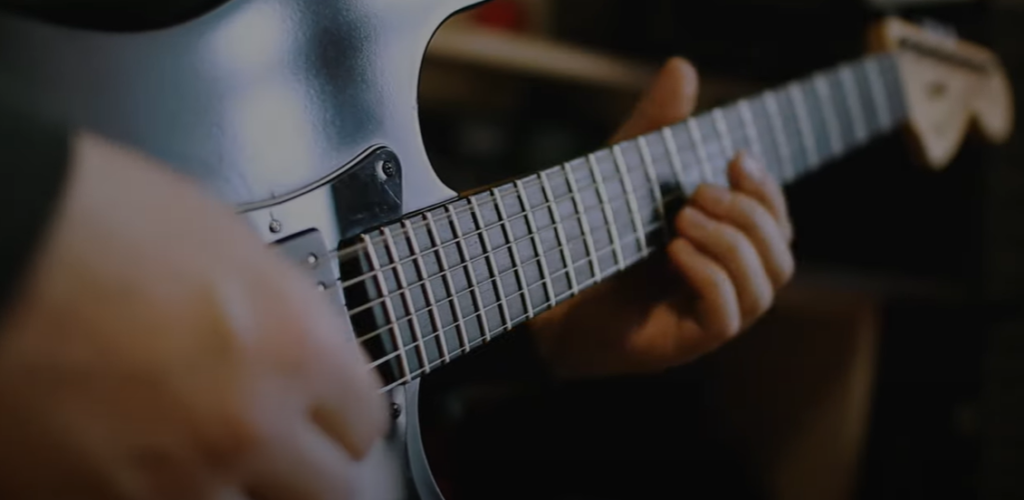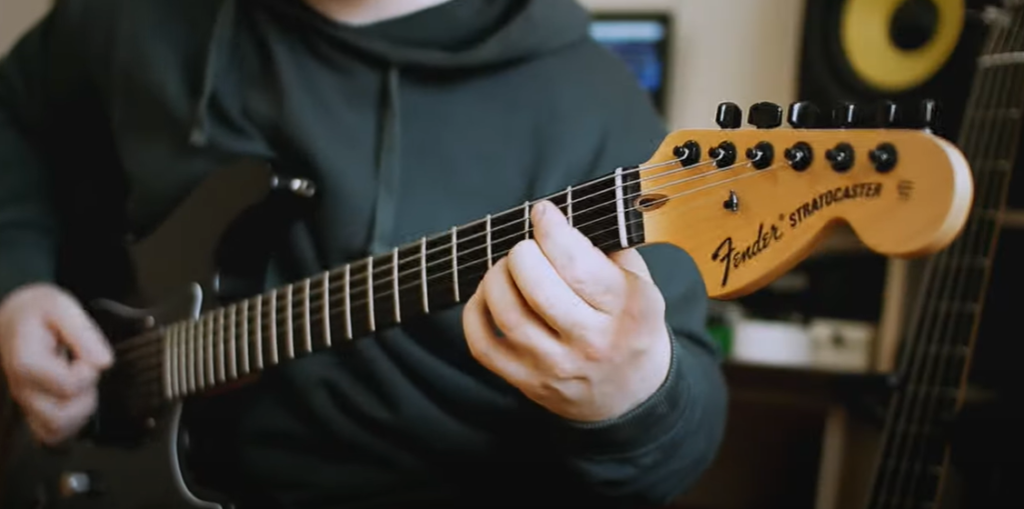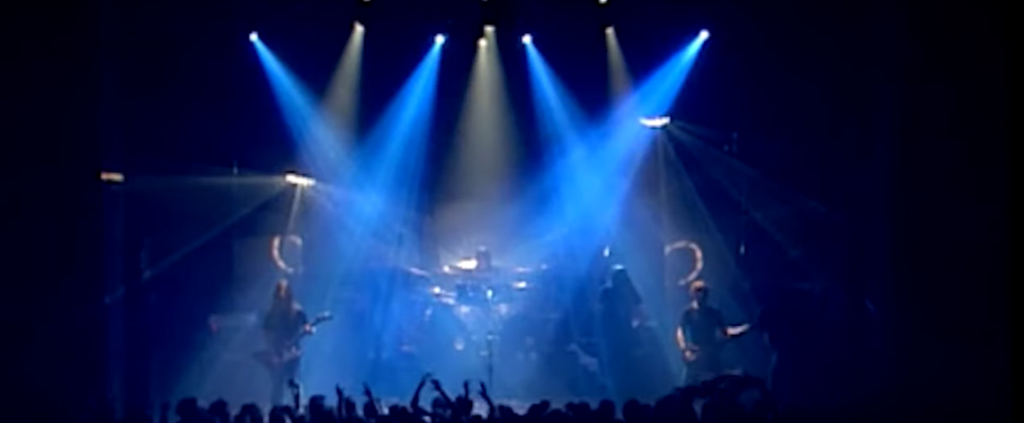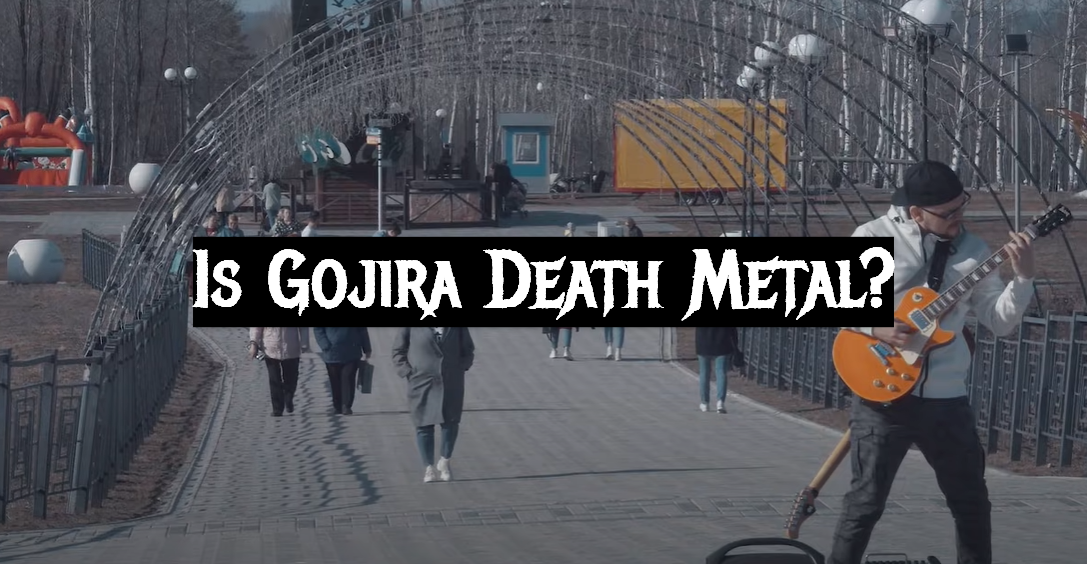Have you ever found yourself mindlessly scrolling through music streaming services, looking for something new to listen to and stumbled upon the band Gojira? If so, it’s likely that a few of your questions were “Is Gojira Death Metal?” or “What kind of metal is this?” In this blog, we will break down what genre Gojira belongs in and why it has gained such a cult following among metal fans over the years. We’ll discuss what sets them apart from other metal acts both musically and lyrically, explore their discography, examine how their sound has evolved since they exploded onto the scene two decades ago. So, are they death metal…or something else entirely? we are about to dive into all things Gojira!
Table of Contents
Understanding Death Metal
Before we dive into the debate about Gojira’s classification, it’s crucial to have a basic understanding of what Death Metal is. Distinguished by its distorted and detuned guitars, intense drumming, and guttural growling vocals, Death Metal emerged in the 1980s as a subgenre of heavy metal. It’s dark and complex themes often touch on subjects like mortality, nihilism, and existentialism.

History of the Genre death metal
The origins of Death Metal can be traced back to the mid-1980s, with bands like ‘Venom’, ‘Slayer’, and ‘Possessed’ laying the groundwork with their experimentation in extremity. [1] However, it was the 1987 album “Scream Bloody Gore” by ‘Death’ that truly established the genre as a distinct entity within the heavy metal universe.
Over the course of the next couple of decades, the evolution of Death Metal persisted, displaying a growing variety and range. Bands began integrating components from diverse genres like progressive rock, jazz influences, and elements from classical music.This integration gave rise to fresh sub-genres like Technical Death Metal and Melodic Death Metal, contributing to the genre’s widening popularity and creative boundaries.
In the current era, Death Metal remains a potent force in the heavy metal scene, continually redefining itself and pushing the boundaries of musical extremity.
Main characteristics
To truly comprehend Death Metal, one must familiarize themselves with its defining characteristics. Among these, arguably the most significant is its sheer sonic extremity—a cacophony of distortion-drenched guitars, rapid-fire drumming, and guttural vocals that often border on the inhuman. Harmonically, Death Metal tends to favor minor keys and dissonant intervals, creating a dark and often unsettling atmosphere.
Structurally, the genre is marked by its complexity, with songs often veering off into unexpected directions and incorporating intricate, technically demanding passages. Finally, Death Metal’s visual aesthetic, from album covers to band logos, tends to be as extreme as the music itself. Graphic depictions of violence, death, and horror are common, often rendered in intricate detail. These are the main elements that make up Death Metal’s unique identity, setting it apart from other heavy metal subgenres.

Instrumentation
Death Metal is renowned for its distinctive instrumentation, which contributes significantly to its intense and aggressive sound. Undoubtedly, the guitar serves as the foundational element of this genre, recognized for its heavily distorted, low-tuned riffs. These riffs frequently employ techniques like palm-muting and tremolo picking. Guitar solos, while not as common as in other forms of metal, are still present in many Death Metal band’s repertoire and usually convey a sense of chaos and dissonant melody. The bass guitar, frequently mirroring the guitar riffs, adds depth and heaviness to the overall sound.
Drums, another crucial component, are played at rapid speeds and often employ double-bass drumming and blast beats techniques, creating a thunderous, relentless rhythm. Lastly, the vocals in Death Metal are far removed from traditional singing. Vocalists employ a variety of techniques, including deep growls, high-pitched screams, and guttural roars, to add to the genre’s dark and aggressive aesthetic. [2] The complexity of Death Metal’s instrumentation challenges the performers’ technical abilities and distinguishes the genre musically from other forms of heavy metal.
Vocals and lyrics
Death Metal vocals are a key element of the genre, possessing unique characteristics that set them apart from other sub-genres of heavy metal. The vocal style ranges from low, guttural growls to high-pitched screams, often alternating between the two for dramatic effect. The aim is to create a sense of menace and intensity, with the vocals often sounding as though they are emanating from a monstrous or demonic entity.
The lyrics in Death Metal are typically dark, dealing with themes of death, destruction, and the macabre. They often delve into philosophical and existential topics, exploring the darker aspects of human existence in a way that can be both profound and unsettling. The writing style is often complex, filled with metaphor and rich in imagery, creating a vivid and often disturbing narrative. The combination of these harsh vocals and dark, profound lyrics helps to create the intense, brooding atmosphere that is a hallmark of the Death Metal genre.
Subgenres
Over the years, Death Metal has splintered into a wide array of sub-genres, each with its own distinctive characteristics and stylistic tendencies.
- Technical Death Metal, for instance, places a greater emphasis on musicianship and complexity, often incorporating intricate, jazz-like arrangements and unconventional song structures.
- Melodic Death Metal, on the other hand, blends the aggression and intensity of Death Metal with more melodically inclined elements, often featuring clean, sung vocals and harmonized guitar leads.
- Brutal Death Metal amplifies the genre’s inherent extremity, with guttural vocals, blast beat drumming, and a relentless, unyielding approach to heaviness. [3]
- Deathcore, a fusion of Death Metal and Metalcore, incorporates breakdowns and often uses a mix of low growls and high screams.
- Lastly, Progressive Death Metal merges the genre’s intensity with the exploratory, boundary-pushing approach of progressive rock, resulting in music that is both heavy and highly innovative.
Each of these sub-genres contributes to the rich tapestry of Death Metal, showcasing the genre’s remarkable versatility and ongoing evolution.

Gojira (band)
Gojira are a French progressive metal band formed in 1996. Led by vocalist and guitarist Joe Duplantier, the group quickly rose to prominence due to their unique sound, blending elements of death metal with progressive rock and jazz-inspired rhythms. [4] The quartet’s music is represented by its heavy riffs, complex arrangements, and powerful lyrics, earning them widespread respect from both metal fans and critics alike.
History and development of the band
Gojira was originally formed under the name “Godzilla” by brothers Joe Duplantier, who plays guitar and sings, and Mario Duplantier, the band’s drummer. The siblings had been playing music together from a young age, inspired by both the complexity of progressive rock and the aggressive intensity of death metal. In 1996, they decided to formalize their musical endeavor with the addition of guitarist Christian Andreu and bassist Alexandre Cornillon, thus marking the birth of the band.
In 2001, they switched their name from “Godzilla” to “Gojira” – the original Japanese name for Godzilla. This name change was driven in part by legal considerations, but it also marked a turning point for the band, reflecting their maturing sound and broadening artistic vision. Jean-Michel Labadie replaced Cornillon as the bassist during the same period.
Over the years, Gojira has become renowned for their environmentally themed lyrics and intricate, rhythmically complex musical arrangements. Their 2005 album, “From Mars to Sirius,” is often considered their breakout work, featuring critically acclaimed tracks such as “Flying Whales.” Their subsequent albums, including “The Way of All Flesh” (2008), “L’Enfant Sauvage” (2012), and “Magma” (2016), have further cemented their status as one of the most innovative and respected acts in modern metal.
Gojira’s music has continued to evolve over time, with each album introducing new elements to their sound. The band is not afraid to experiment with unconventional song structures or to incorporate influences from outside the metal genre. Despite these evolutions, they have remained true to their roots, consistently delivering music that is both technically impressive and viscerally powerful.
Musical style
Gojira’s musical style is a unique fusion of progressive metal and death metal, characterized by technical proficiency, complex song structures, and environmentally conscious lyrics. From their heavy, palm-muted guitar riffs and syncopated, double pedal drumming to their atmospheric, clean sections, Gojira transports listeners on a sonic journey that is both heavy and melodic.
The band’s progressive inclination is evident in their intricate arrangements, odd time signatures, and lengthy compositions, which often include unexpected shifts in tempo and mood. This progressive element is seamlessly intertwined with the aggressive intensity of death metal, evident in their harsh vocals, tremolo picking, and blast beat drumming.
However, beyond these stylistic elements, what truly sets Gojira apart is their lyrical content. While many death metal bands focus on themes of death and the macabre, Gojira’s lyrics frequently address environmental issues, urging listeners to respect and preserve the natural world. This combination of technical musicianship, progressive songwriting, and ecological awareness has earned Gojira a unique place in the metal landscape, marking them out as a band that is not only musically innovative but also socially conscious.

Is Gojira a death metal?
Gojira’s categorization into a single subgenre of metal, such as death metal, would be a simplistic view considering their diverse and evolving musical style. Their music indeed possesses key elements associated with death metal, such as intense, distortion-heavy guitar work, aggressive drumming, and harsh vocals. However, this is juxtaposed with progressive elements like complex song structures, dynamic shifts in tempo, and an emphasis on melody, which are qualities more commonly associated with progressive metal. Furthermore, their lyrics, often exploring environmental and philosophical themes, diverge from the typical death metal focus on morbidity and the macabre.
Therefore, while Gojira’s music contains certain aspects of death metal, it would be more accurate to describe them as a progressive death metal band. Their sound reflects a synthesis of styles that respects the intensity and sheer power of death metal, but also embraces the intricate musicality and thematic depth of progressive rock. Through this fusion, Gojira has carved out a unique niche within the metal landscape, demonstrating that they transcend the boundaries of any single genre.
Legacy and Discography
Gojira’s legacy in the world of metal music is solidified by their persistent exploration of new soundscapes and their commitment to addressing pressing environmental issues through their art. Their music has resonated with a broad audience, earning them accolades from fans and critics alike. Having earned nominations for two Grammy Awards, they have firmly established their position as one of the esteemed modern metal bands.
By consistently pushing the boundaries of their music, and by engaging in a dialogue about environmental stewardship in a genre that typically shies away from such topics, Gojira has made an enduring impression on the landscape of metal music.Their music not only entertains but also challenges listeners to contemplate their relationship with the natural world. Their influence extends beyond music, inspiring listeners to think critically about their role in protecting our planet.
Discography
- “Terra Incognita” (2001)
- “The Link” (2003)
- “From Mars to Sirius” (2005)
- “The Way of All Flesh” (2008)
- “L’Enfant Sauvage” (2012)
- “Magma” (2016)
- “Fortitude” (2021)
Awards
Gojira has received significant recognition and numerous awards throughout their career, evidencing their impact on the music scene.
- In 2006, Gojira achieved their initial significant recognition when Metal Hammer presented them with the Golden Gods Award in the category of Best Underground Band.
- In 2012, a remarkable distinction came from their native France as they clinched the Victoires de la Musique, often referred to as the French Grammy, for their album “L’Enfant Sauvage.”
- Their impact continued to garner attention, resulting in two Grammy Award nominations in 2016: one for Best Rock Album with “Magma,” and the other for Best Metal Performance with the song “Silvera.” [5]
- Their reputation continues to grow with each release, and the band’s dedication to their craft, coupled with their strong message of environmental responsibility, has won them a legion of loyal fans around the world. Their recent album, “Fortitude” (2021), has been lauded for its innovative approach to the metal genre, earning a designation for Best Metal Performance which was held at the 63rd Annual Grammy Awards. This continued recognition is a testament to Gojira’s enduring appeal and their ability to marry technical musicianship with socially conscious themes.
Over the course of their journey, Gojira has showcased their talent on the grand stages of the world’s most prestigious music festivals.They’ve performed at leading European festivals such as Download Festival, Hellfest, and Wacken Open Air, showcasing their intense live performances to thousands of fans. In the United States, they’ve taken part in iconic festivals like Coachella, Bonnaroo, and the Chicago Open Air. Their powerful live shows, characterized by ferocious energy and technical precision, have earned them a reputation as one of the must-see acts of the global metal scene.

Frequently Asked Questions
Who is the big 4 of death metal?
The “Big 4” of death metal typically refers to the bands that have been most influential in defining and popularizing the genre. While there may be some variation in opinion, the consensus generally includes Death, Morbid Angel, Cannibal Corpse, and Obituary. These bands emerged in the late 1980s and early 1990s, each contributing to the evolution of death metal with their distinctive sound and aggressive musical style.
Who is considered death metal?
Some of the bands that are considered to be key players in death metal include Death, Morbid Angel, Cannibal Corpse, Obituary, Deicide, and Possessed. These bands have all contributed significantly to the genre, each bringing their own unique style and flavor to the table. However, death metal is a broad genre with numerous subgenres and offshoots, each with their own defining characteristics. For instance, there’s melodic death metal, which includes bands like At The Gates and In Flames; technical death metal, featuring bands like Necrophagist and Obscura; and progressive death metal, where we find bands like Opeth and the aforementioned Gojira. There’s also brutal death metal and deathcore, which include bands like Suffocation and Suicide Silence respectively.
Who was the 1st death metal band?
The first death metal band is a topic of debate among metal enthusiasts and historians. However, the consensus often leans towards the American band Death, led by vocalist and guitarist Chuck Schuldiner. Formed in 1983 under the name Mantas, the band released their first studio album “Scream Bloody Gore” in 1987, which is widely considered the first true death metal record. This album marked a significant departure from traditional heavy metal and the more contemporary thrash metal, characterized by its highly distorted guitars, growled vocals, complex song structures, and lyrical themes focused on death, violence, and the occult. However, it’s also worth noting that some believe the roots of death metal lie in the music of earlier bands like Venom, Slayer, and Possessed. While these bands did not necessarily play death metal, their sound bore many of the hallmarks of the genre, such as distorted guitars and aggressive vocals.
Who is the king of death metal?
The title of “King of Death Metal” is a subjective one as it largely depends on personal preferences and the specific subgenre of death metal one is considering. However, Chuck Schuldiner of the band Death is often referred to as the “Father of Death Metal,” which could arguably place him in contention for the title. His pioneering work in the genre helped shape its formative years. Moreover, bands like Cannibal Corpse have had a significant influence on the genre’s development and have garnered a substantial following. Ultimately, the “King of Death Metal” might differ from person to person, based on their individual perception and understanding of the genre.
Useful Video: METAL IN PUBLIC: Gojira
Conclusion
To conclude, it is clear that Gojira explores many of the musical elements associated with death metal, yet the band’s components represent a unique merging of sounds and authentic songwriting. While each individual element may embody characteristics associated with death metal, Gojira’s overall sound is far more diverse and expansive. Gojira’s electric explorations open the genre up to new fans and creative innovations while still retaining its widely recognized core aspects. The result is an impressive blend of sounds that research can’t properly define, but are nevertheless universally accepted as both refreshingly unique and fearlessly authentic in regards to heavy music. It’s this very combination that has seen Gojira conquer different genres and produced numerous masterpieces for listeners from all walks of life to enjoy.
References:
- https://metalheadcommunity.com/history-of-death-metal/
- https://metal.fandom.com/wiki/Death_metal
- https://pianity.com/tag/brutal-death-metal
- https://www.francerocks.com/artist/gojira/
- https://en.wikipedia.org/wiki/Gojira_(band)






Leave a Reply